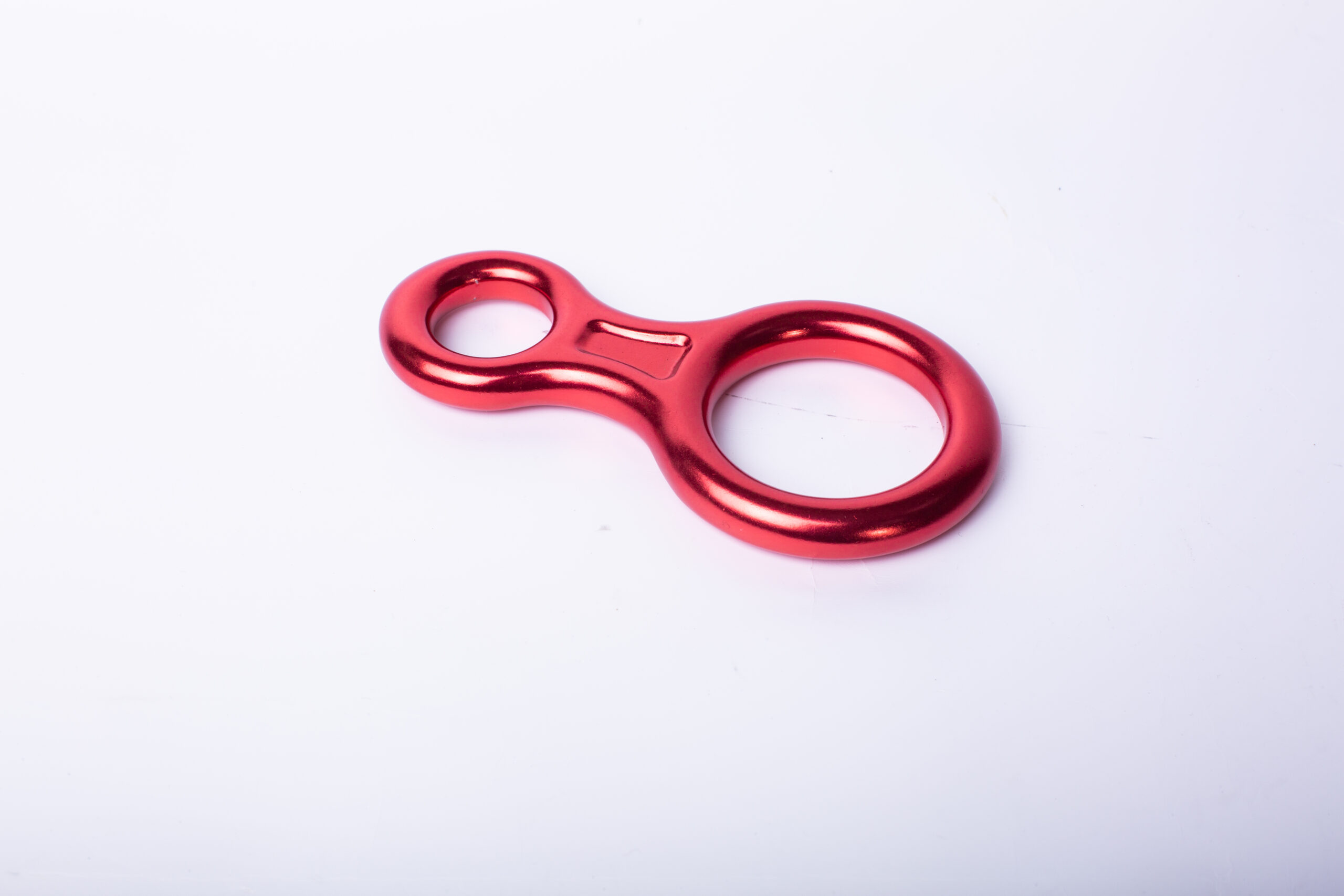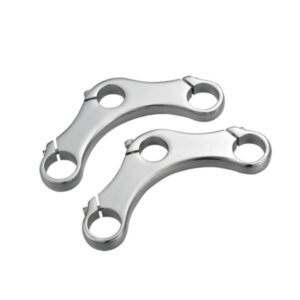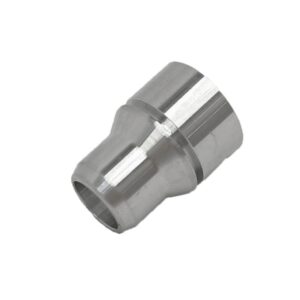we specialize in the production of high-precision aluminum forgings for a diverse range of applications. Our products are known for their strength, durability, and resistance to corrosion, making them ideal for use in industries such as aerospace, automotive, defense, and oil and gas.
Some of our popular products include:
- Aerospace components: We supply a wide range of aluminum forgings for use in aircraft structures, landing gear, and engine components. Our forgings are made from premium grade aluminum alloys, ensuring maximum strength and reliability.
- Automotive parts: We manufacture various automotive parts such as steering knuckles, control arms, and transmission components. Our forgings are designed to meet the rigorous demands of the automotive industry, providing superior performance and longevity.
- Defense equipment: AFC is a trusted supplier of high-strength aluminum forgings for military equipment such as missiles, tanks, and armored vehicles. These forgings are designed to withstand extreme conditions and provide exceptional performance in critical situations.
- Oil and gas components: Our forgings are also used in the oil and gas industry for various applications such as drilling equipment, valves, and pipelines. Our products are designed to withstand harsh environments and high pressures, ensuring reliable performance in the field.
quality is our top priority. We adhere to strict quality control measures throughout the production process to ensure that our products meet the highest standards. We have a dedicated quality assurance team that conducts regular inspections and tests to ensure that our products are defect-free and meet all customer requirements. In addition, we are ISO 9001 certified, further demonstrating our commitment to providing superior quality products and services.
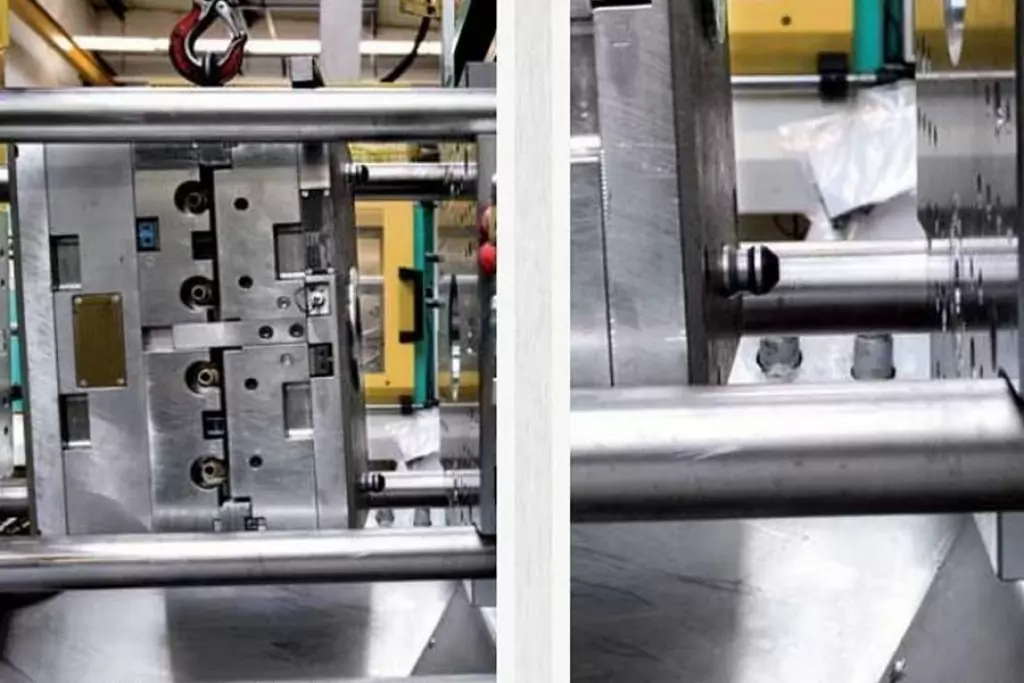
Aluminum forging is the process of shaping and forming aluminum using compressive forces and elevated temperatures. It is a highly versatile and cost-effective method of manufacturing high-quality and complex aluminum parts. The forged aluminum components have excellent strength-to-weight ratios, making them ideal for use in various industries such as aviation, automotive, and construction. The forging process also improves the structural integrity and durability of the aluminum, making it resistant to wear, corrosion, and fatigue. With its ability to produce lightweight, durable, and intricate designs, aluminum forging is a crucial technique in modern manufacturing and engineering.
Aluminum forging is a manufacturing process that involves shaping aluminum alloys into desired shapes through the use of heat, pressure, and specialized tools. It is a popular method for producing strong and lightweight metal parts for various industries such as aerospace, automotive, and construction. By heating aluminum alloys to high temperatures and subjecting them to compressive forces, the material is transformed into the desired shape, resulting in a finished product with excellent strength, durability, and dimensional accuracy. This process also allows for the creation of complex and intricate designs, making it a versatile option for a wide range of applications. With its numerous advantages and advancements in technology, aluminum forging has become a preferred choice for producing high-quality and cost-effective metal components.

Aluminum forging is a specialized process that involves shaping aluminum into desired forms through the application of pressure and heat. It is a widely used manufacturing method for creating strong and durable components for a variety of industries, such as aerospace, automotive, and construction. With its unique properties of being lightweight, corrosion-resistant, and high strength, aluminum has become a popular choice for forging applications. In this process, aluminum billets are heated to a specific temperature, placed in a die, and then compressed by a forging press to form the desired shape. This results in a high-quality piece with enhanced mechanical properties and a refined surface finish. Let’s dive deeper into the world of aluminum forging and explore its benefits and applications.
1.What is the typical tolerance range for aluminum forgings?
2.How does the microstructure of aluminum forge parts differ from those of other manufacturing methods?
3.Can aluminum forgings be repaired if they become damaged or worn out?
4.Can aluminum forgings be used in high-temperature applications?
5.What types of tools and equipment are used in the aluminum forging process?
6.How does the use of different forging techniques affect the grain structure of aluminum forgings?
7.Are there any advantages to using aluminum forgings over castings or extrusions?
8.How does the shape and complexity of the part affect the feasibility of aluminum forging?
9.What are the advantages of using aluminum forging compared to other manufacturing methods?
1.What is the typical tolerance range for aluminum forgings?
The typical tolerance range for aluminum forgings is +/- 0.005 to 0.010 inches. However, this can vary depending on the size and complexity of the forging, as well as the specific requirements of the customer. Some forgings may have tighter tolerances, while others may have looser tolerances. It is important to consult with the forging manufacturer to determine the specific tolerance range for a particular forging.
2.How does the microstructure of aluminum forge parts differ from those of other manufacturing methods?
The microstructure of aluminum forge parts differs from those of other manufacturing methods in several ways:
- Grain structure: Forged aluminum parts have a fine and uniform grain structure compared to other manufacturing methods. This is because the forging process involves the deformation and rearrangement of the metal grains, resulting in a more refined and aligned grain structure.
- Directional properties: The forging process also imparts directional properties to the aluminum, making it stronger and more resistant to fatigue and impact in the direction of the applied force. This is particularly beneficial for parts that will be subjected to high stress or load.
- No porosity: Unlike casting or machining, forging does not involve the melting and solidification of the metal, which can result in porosity or voids in the microstructure. This makes forged aluminum parts more structurally sound and less prone to defects.
- Improved mechanical properties: The forging process also improves the mechanical properties of aluminum, such as tensile strength, yield strength, and hardness. This is due to the plastic deformation and work hardening that occurs during forging.
- Fine grain flow lines: The flow of metal during forging creates fine grain flow lines in the microstructure, which contribute to the overall strength and toughness of the part.
- Homogeneity: Forging also ensures a high degree of homogeneity in the microstructure of aluminum parts, as the metal is worked and shaped uniformly throughout the entire part.
Overall, the microstructure of aluminum forge parts is more refined, stronger, and more uniform compared to parts produced by other manufacturing methods, making them ideal for applications that require high strength and reliability.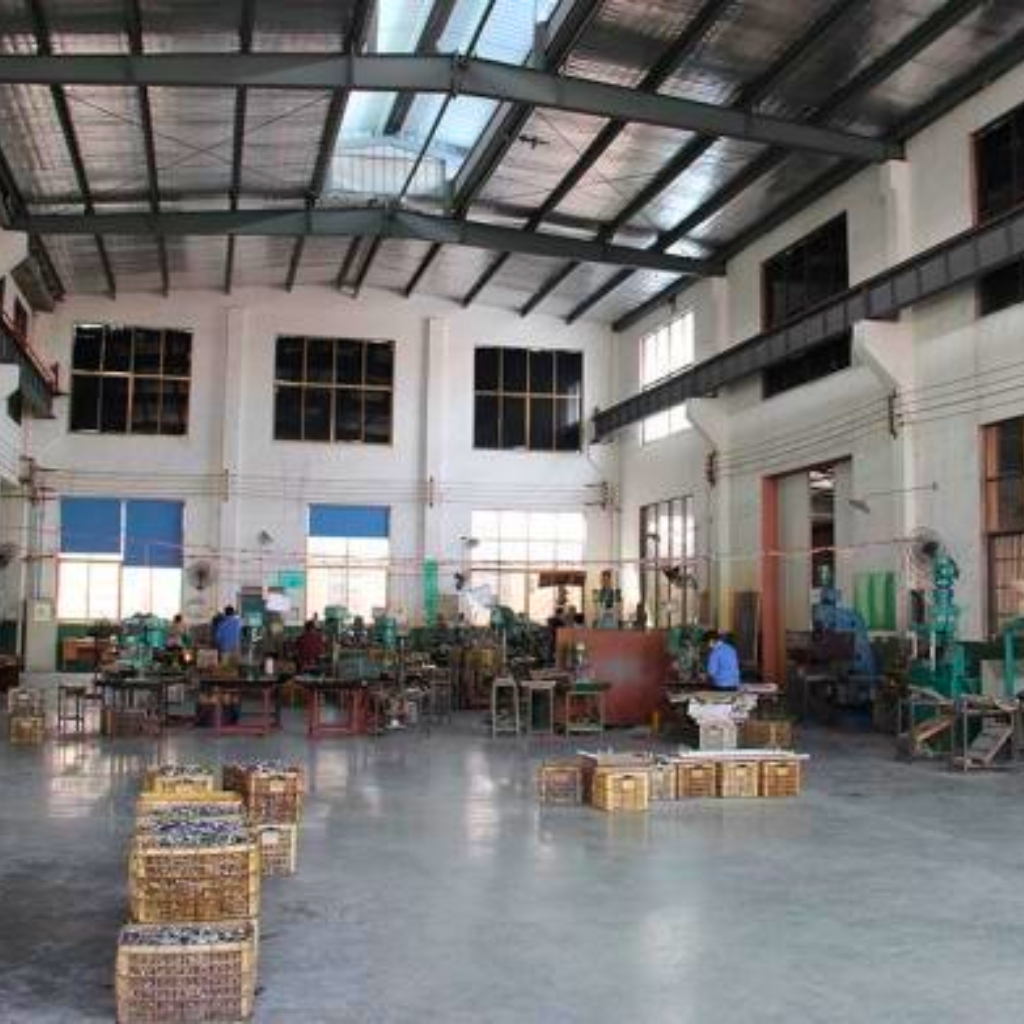
3.Can aluminum forgings be repaired if they become damaged or worn out?
Yes, aluminum forgings can be repaired if they become damaged or worn out. The repair process will depend on the extent of the damage and the type of forging. In some cases, the damaged area can be machined or ground down and then re-forged to restore its original shape. In other cases, the forging may need to be heated and reshaped using specialized tools and techniques. It is important to consult with a professional or the manufacturer for the best repair method for your specific forging.
4.Can aluminum forgings be used in high-temperature applications?
Yes, aluminum forgings can be used in high-temperature applications. Aluminum has a high melting point of 660°C (1220°F) and can withstand temperatures up to 400°C (752°F) without losing its strength. However, the specific temperature limit for aluminum forgings will depend on the alloy used and the specific application. Some aluminum alloys, such as 7075 and 2024, have higher strength and can withstand higher temperatures compared to other alloys. It is important to consult with a forging expert to determine the best alloy and forging process for your specific high-temperature application.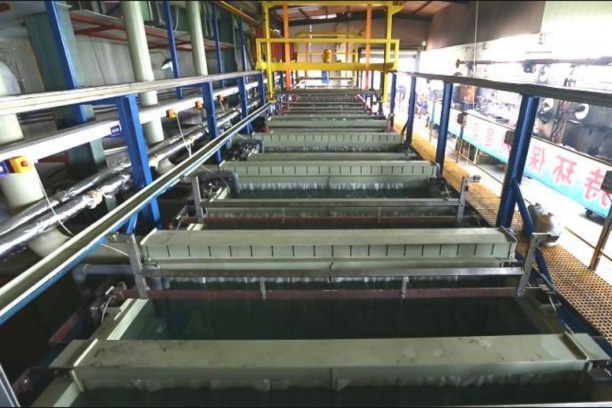
5.What types of tools and equipment are used in the aluminum forging process?
1. Forging Hammer: A heavy-duty hammer used to shape and deform the aluminum material.
- Forging Press: A machine that applies pressure to the aluminum material to shape it into the desired form.
- Die: A specialized tool used to shape the aluminum material into a specific form.
- Furnace: A high-temperature oven used to heat the aluminum material to its forging temperature.
- Tongs: A tool used to hold and manipulate the hot aluminum material during the forging process.
- Anvil: A heavy block of metal used as a base for the forging process.
- Swage Block: A multi-purpose tool used to shape and form the aluminum material.
- Chisel: A sharp tool used to cut and shape the aluminum material.
- Mandrel: A cylindrical tool used to shape the inside of the aluminum material.
- Sledgehammer: A heavy hammer used to shape and deform larger pieces of aluminum.
- Hydraulic Press: A machine that uses hydraulic pressure to shape and deform the aluminum material.
- Rolling Mill: A machine used to flatten and shape the aluminum material into thinner sheets.
- Shears: A cutting tool used to cut the aluminum material into smaller pieces.
- Sandblaster: A tool used to clean and prepare the surface of the aluminum material before forging.
- Heat Treatment Equipment: Various equipment used to heat treat the aluminum material after forging to improve its strength and durability.
6.How does the use of different forging techniques affect the grain structure of aluminum forgings?
The grain structure of aluminum forgings is affected by the forging technique used in the manufacturing process. Different forging techniques can result in different grain structures, which can have an impact on the mechanical properties and performance of the final product.
Open Die Forging: In open die forging, the aluminum billet is placed between two flat dies and compressed to the desired shape. This process results in a coarse grain structure with large, irregularly shaped grains. The grains are elongated in the direction of the applied force, which can improve the strength and toughness of the forging.
Closed Die Forging: In closed die forging, the aluminum billet is placed in a die that has a cavity in the shape of the desired product. The billet is then compressed to fill the cavity and take on the shape of the die. This process results in a fine grain structure with smaller, more uniform grains. The grains are compressed and aligned in the direction of the applied force, which can improve the strength and fatigue resistance of the forging.
Ring Rolling: In ring rolling, a cylindrical billet is placed between two rollers and compressed to form a ring-shaped forging. This process results in a fine grain structure with elongated grains in the circumferential direction. The grains are compressed and aligned in the direction of the applied force, which can improve the strength and ductility of the forging.
Upset Forging: In upset forging, the aluminum billet is placed between two dies and compressed in a direction perpendicular to the length of the billet. This process results in a fine grain structure with elongated grains in the direction of compression. The grains are compressed and aligned in the direction of the applied force, which can improve the strength and toughness of the forging.
In general, closed die forging and ring rolling result in finer and more uniform grain structures compared to open die forging and upset forging. This is because the billet is subjected to more compressive forces and deformation in these processes, leading to a more refined grain structure. The direction of the applied force also plays a role in the grain structure, with grains being elongated and aligned in the direction of compression.
In conclusion, the use of different forging techniques can have a significant impact on the grain structure of aluminum forgings, which in turn can affect the mechanical properties and performance of the final product. Manufacturers must carefully consider the desired properties and choose the appropriate forging technique to achieve the desired grain structure and optimize the performance of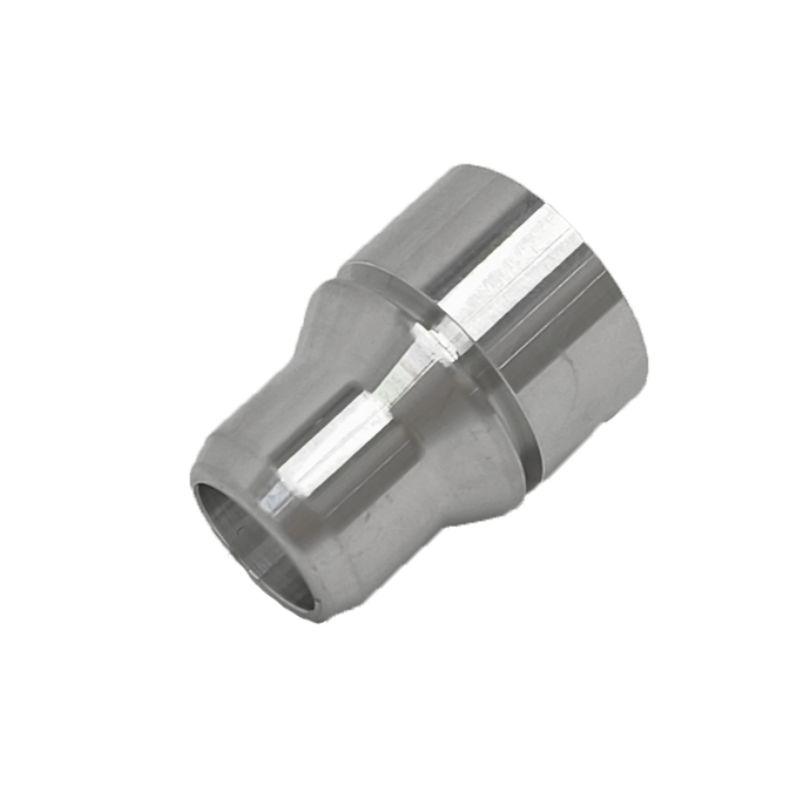
7.Are there any advantages to using aluminum forgings over castings or extrusions?
1. Strength and Durability: Aluminum forgings have a higher strength-to-weight ratio compared to castings or extrusions. This means that they can withstand higher loads and stresses without deforming or breaking, making them more durable and long-lasting.
- Improved Mechanical Properties: The forging process involves shaping the metal under high pressure, which results in a more uniform grain structure and improved mechanical properties such as toughness, fatigue resistance, and impact strength.
- Tighter Tolerances: Forgings can be produced with tighter tolerances compared to castings or extrusions. This is because the forging process allows for more precise shaping and control over the final dimensions of the part.
- Better Surface Finish: Forgings have a smoother surface finish compared to castings or extrusions. This is because the high pressure and repeated hammering during the forging process compresses the metal, resulting in a finer grain structure and a smoother surface.
- Cost-Effective for High-Volume Production: Forgings are more cost-effective for high-volume production compared to castings or extrusions. This is because the forging process is highly automated and can produce large quantities of parts quickly and efficiently.
- Design Flexibility: Forgings offer more design flexibility compared to castings or extrusions. This is because the forging process allows for the creation of complex shapes and intricate details that may not be possible with other manufacturing methods.
- Resistance to Corrosion: Aluminum forgings have a higher resistance to corrosion compared to castings or extrusions. This is because the forging process results in a more compact and dense structure, making it less susceptible to corrosion.
- Environmentally Friendly: Forging is a more environmentally friendly manufacturing process compared to casting or extrusion. This is because it produces less waste and uses less energy, making it a more sustainable option for producing aluminum parts.
8.How does the shape and complexity of the part affect the feasibility of aluminum forging?
The shape and complexity of a part can greatly affect the feasibility of aluminum forging. Forging is a manufacturing process that involves shaping metal by applying compressive forces through the use of dies and hammers. The process is typically used to create parts with high strength and durability, making it a popular choice for producing components for various industries.
When it comes to aluminum forging, the shape and complexity of the part can impact the feasibility of the process in several ways:
- Die Design: The shape and complexity of the part will determine the design of the forging dies. Forging dies are used to shape the metal into the desired form, and they need to be designed specifically for each part. Complex shapes may require more intricate and expensive dies, making the process less feasible for smaller production runs.
- Material Flow: The shape and complexity of the part can also affect the flow of the aluminum during the forging process. Parts with intricate designs or sharp corners may require multiple forging steps to achieve the desired shape, which can increase production time and cost.
- Heat Distribution: During the forging process, heat is applied to the metal to make it more malleable. The shape and complexity of the part can affect how evenly the heat is distributed, which can impact the quality and consistency of the final product.
- Tolerances: Forging is a precise process, and the shape and complexity of the part can affect the tolerances that can be achieved. Parts with intricate designs may require tighter tolerances, which can be more challenging and costly to achieve.
- Material Selection: The shape and complexity of the part can also impact the choice of aluminum alloy used for forging. Some alloys are better suited for complex shapes, while others may be more suitable for simpler designs.
In general, simpler and less complex parts are more feasible for aluminum forging, as they require less time, cost, and resources to produce. However, with advancements in technology and techniques, more complex parts can also be forged with high precision and efficiency. It ultimately depends on the specific design and requirements of the part, as well as the capabilities of the forging facility.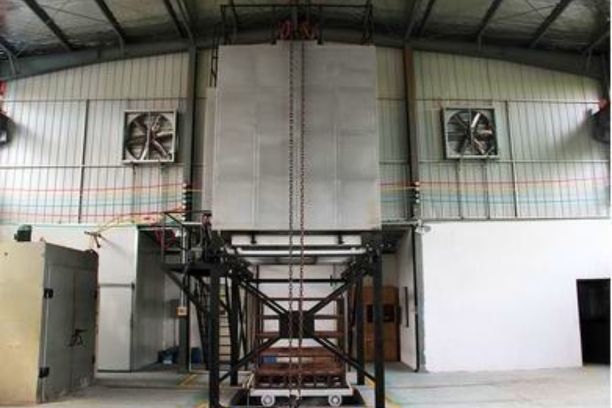
9.What are the advantages of using aluminum forging compared to other manufacturing methods?
1. Strength and Durability: Aluminum forgings have a higher strength-to-weight ratio compared to other manufacturing methods, making them stronger and more durable. This makes them suitable for use in high-stress applications.
- Lightweight: Aluminum is a lightweight material, making it ideal for applications where weight is a critical factor. Forged aluminum components can reduce the overall weight of a product, making it more efficient and cost-effective.
- Cost-effective: Forging is a cost-effective manufacturing method as it requires less material and energy compared to other methods such as casting or machining. This results in lower production costs and ultimately lower prices for consumers.
- Precision and Consistency: Forging allows for precise shaping and forming of aluminum, resulting in consistent and accurate dimensions. This is especially important for parts that require tight tolerances and complex shapes.
- Improved Mechanical Properties: The forging process improves the mechanical properties of aluminum, such as its strength, toughness, and fatigue resistance. This makes forged aluminum components more reliable and long-lasting.
- Versatility: Aluminum forging can be used to produce a wide range of shapes and sizes, making it a versatile manufacturing method. It can be used to create complex and intricate designs that are difficult to achieve with other methods.
- Enhanced Surface Finish: Forging can improve the surface finish of aluminum, resulting in a smoother and more polished surface. This is beneficial for applications where aesthetics are important.
- Better Material Utilization: Forging allows for the efficient use of materials, resulting in less waste and scrap compared to other methods. This makes it a more environmentally friendly manufacturing process.
- High Production Rates: Forging is a high-speed production process, allowing for large quantities of aluminum components to be produced in a short amount of time. This makes it suitable for mass production.
- Resistance to Corrosion: Aluminum forgings have a natural resistance to corrosion, making them suitable for use in harsh environments. This makes them ideal for applications in the automotive, aerospace, and marine industries.

